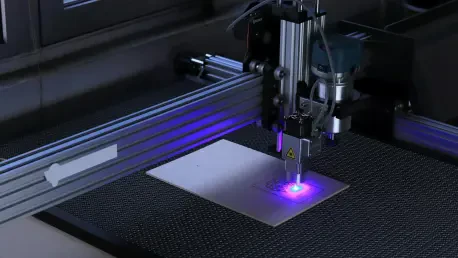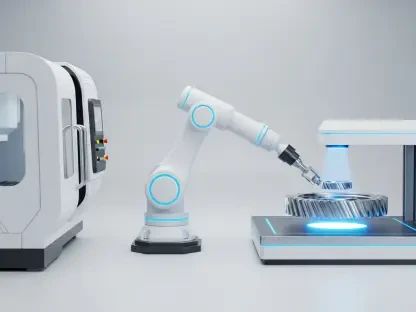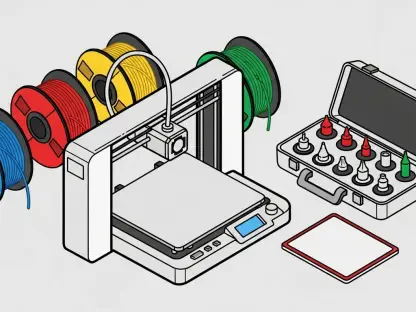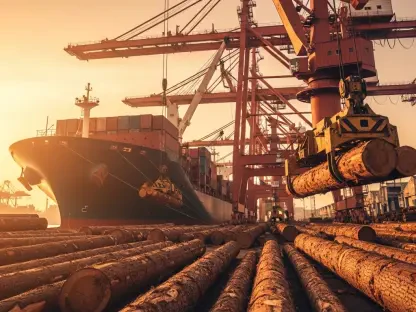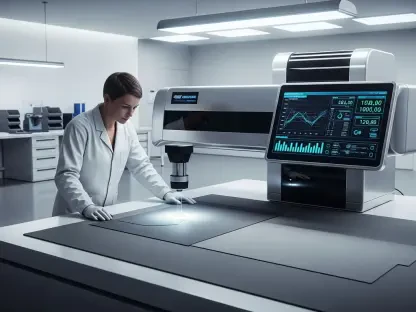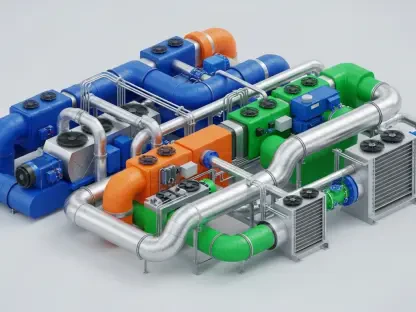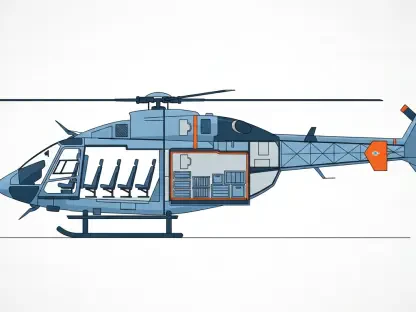The manufacturing industry constantly seeks techniques that enhance precision, efficiency, and sustainability while minimizing waste and energy consumption, making traditional methods feel increasingly outdated. Laser-assisted cold spray (LACS) has emerged as a promising innovation that addresses these needs, offering transformative potential. Developed by the Center for Industrial Photonics at the University of Cambridge, LACS combines laser technology with cold spraying to solve some of manufacturing’s biggest challenges. By directing supersonic metal or cermet particles onto preheated surfaces, LACS enables material deposition without melting, ensuring precision and efficient use of resources. This technology opens the door to new possibilities in additive manufacturing that were previously unattainable. Traditional methods often face setbacks due to high temperatures, material wastage, and inefficient practices. Laser-assisted cold spray not only contends with these issues but also champions a shift toward more sustainable production paradigms that align with global efforts to promote eco-friendly manufacturing.
LACS in the Modern Manufacturing Landscape
In the current industrial era, where sustainability and precision are paramount, LACS represents a significant departure from conventional manufacturing processes. This technology is gaining traction in industries such as aerospace, energy, and biomedical manufacturing, due to its ability to produce high-performance coatings, undertake precise component repairs, and craft complex designs. One compelling aspect of LACS is its potential to revolutionize additive manufacturing by enabling localized material deposition. This advancement allows for tailored designs where material properties can be fine-tuned to meet specific functional requirements. For the aerospace sector, in particular, this means extending aircraft lifespan through on-demand fabrication and repair of parts that typically require stockpiling and risk obsolescence.
The advantages of LACS extend beyond its current industrial applications. As manufacturing industries globally strive to reduce carbon footprints and achieve net-zero emissions, LACS is poised to play a significant role. It facilitates a reduction in material waste and energy consumption, making the process not only eco-friendly but also economically favorable. With the world becoming increasingly aware of environmental concerns, adopting LACS could support manufacturers in meeting stricter regulatory standards. As companies continue to explore the possibilities afforded by laser-assisted cold spray, the rewards of transitioning to such sustainable, efficient techniques become increasingly apparent.
The Technology Behind LACS
The technological essence of LACS lies in its combination of laser technology with the cold spray process, a synergy that distinguishes it from other additive manufacturing methods. The principle of cold spraying involves accelerating metal or cermet particles to supersonic speeds before they impact a surface, offering a unique advantage by preventing thermal degradation. Traditional methods often suffer from challenges like high temperatures leading to less effective outcomes. Integrating a laser in this process allows for precise, localized heating of the deposition area. This capability guarantees improved adhesion of the particles to the substrate, maintaining superior quality without melting the materials involved, thereby preserving their inherent properties.
Key to the cold spray’s utility is its flexibility in using varied materials and depositing them efficiently. This versatility is crucial in industries that demand both lightness and robustness, such as aerospace. Moreover, by localizing heating and controlling particle deposition, LACS efficiently utilizes raw materials and minimizes overspraying, which is often a costly issue in traditional methods. The precise control offered by LACS empowers manufacturers to innovate in design and functionality, reducing dependence on stockpiled materials and allowing rapid creation of custom parts. Such ability is particularly valuable for industries facing rapid changes and demands for tailored solutions.
Transformative Applications Across Industries
LACS is not just limited to theoretical promise; its practical applications span several high-stakes industries. In aerospace, where material integrity, weight, and durability are crucial, LACS allows for creating sophisticated components and achieving innovative repair methods that extend the life of expensive assets. This ability is vital for airplanes and spacecraft, where even minor damage can have costly implications. The energy sector also benefits from LACS by improving the integrity of critical components like turbine blades, thus enhancing efficiency and reliability. Furthermore, the biomedical field, reliant on cutting-edge technology for prosthetics and implants, sees potential in LACS’s capacity for precision and biocompatibility.
As diverse industries recognize and adopt LACS, the technology is reshaping how parts are produced, repaired, and enhanced. Its efficiency in creating bonded coatings, structural components, and resistance to wear and corrosion fundamentally alters traditional material application methods. The customization potential supports industries experiencing dynamic shifts in customer demands and technological trends. The cold spray process’s adaptability to various substrates, such as fiber-reinforced polymers and high-strength alloys, underscores its transformative capacity, providing solutions to complex problems that older methods struggled to address.
Future of Manufacturing With LACS
The path forward with LACS suggests an evolutionary step toward more agile, adaptive, and sustainable manufacturing methodologies. As industries increasingly face economic pressures and supply chain constraints, this innovation allows manufacturers to respond swiftly with localized, on-site production capabilities that reduce logistical dependencies. The decreased requirement for large inventories and transportation aligns well with the emerging digital manufacturing paradigm, where flexibility and responsiveness are valued over static production lines.
Globally, the burgeoning interest in LACS is corroborated by projections indicating significant growth in the additive manufacturing market. The anticipated surge by 2030 highlights the potential of LACS as industries transition from antiquated manufacturing techniques to integrate digital and additive elements. The ongoing refinement of LACS also signals potential expansions into new areas, further enhancing its role as a staple in innovative manufacturing solutions. This progression positions LACS at the forefront of technological advancement, making it an essential element in defining future industry standards and practices.
Reflecting on LACS’s Transformative Impact
In today’s industrial landscape, where sustainability and precision are key, Laser-Assisted Cold Spray (LACS) marks a noteworthy shift from traditional manufacturing methods. This cutting-edge technology is gaining momentum in sectors like aerospace, energy, and biomedical manufacturing. Its appeal lies in its ability to deliver high-performance coatings, carry out precise repairs, and construct intricate designs. One remarkable feature of LACS is its potential to transform additive manufacturing by allowing localized material placement. This breakthrough enables customized designs where material characteristics can be fine-tuned to meet specific functional needs. Specifically for aerospace, this innovation offers the chance to prolong aircraft lifespan with on-demand creation and repair of parts that otherwise would need to be kept in stock, risking obsolescence.
The benefits of LACS go beyond its current industrial use. As manufacturers worldwide aim to lessen their carbon footprints and reach net-zero emissions, LACS is set to play a pivotal role. It significantly reduces material waste and energy use, making it both eco-friendly and cost-efficient. With increasing global attention to environmental issues, adopting LACS can help manufacturers adhere to stricter regulatory guidelines. As companies delve into the possibilities offered by LACS, the gains of moving to such sustainable and efficient methods are becoming more evident, heralding a new era in manufacturing.
